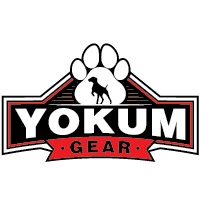Finding the right harness for your furry friend is essential, especially if your dog is of a smaller breed. Extra small dogs require special attention to ensure that their harness provides comfort, security, and ease of movement. This guide will help you select the perfect extra small dog harness, covering important features to look for, types of harnesses available, and tips for fitting and training your tiny companion.
Why an Extra Small Dog Harness?
Choosing the right size harness is critical for several reasons. An extra small dog harness is specifically designed to accommodate the petite frame of a smaller breed, providing a better fit than a regular harness. Proper fit prevents discomfort and reduces the risk of injury by distributing pressure evenly across your dog's body. Additionally, harnesses offer better control compared to traditional collars, which can strain your dog’s neck and cause potential breathing issues.
Types of Extra Small Dog Harnesses
There are various types of harnesses available, each offering unique benefits for your tiny dog. Here are some of the most popular options:
1. Step-In Harness
Step-in harnesses are easy to use and ideal for dogs that dislike having a harness slipped over their heads. Your dog simply steps into the harness, which is then secured with a clip or buckle. These harnesses offer a snug fit and often come with adjustable straps.
2. Vest Harness
Vest harnesses provide added comfort and support with soft, padded material that hugs closely to your dog’s torso. They are perfect for small dogs with sensitive skin or those prone to pulling. These harnesses often feature easy-to-use fasteners and adjustable fittings for a secure fit.
3. Front-Clip Harness
Front-clip harnesses attach the leash at the chest area rather than the back. This design helps reduce pulling by redirecting your dog's momentum toward you, making it easier to manage your tiny companion on walks.
4. Back-Clip Harness
Back-clip harnesses are the most common type, with the leash attachment point located on the back. These harnesses are simpler to put on and comfortable for the dog, making them suitable for well-behaved dogs that don't pull excessively.
Features to Look For
When selecting an extra small dog harness, pay close attention to these key features to ensure a proper fit and maximum comfort:
1. Adjustability
Look for harnesses with multiple adjustable points to customize the fit for your dog's unique shape. This ensures the harness sits comfortably without being too tight or too loose.
2. Material
The material should be durable yet soft, like nylon or breathable mesh, to prevent irritation and provide long-lasting wear. High-quality fabric also ensures the harness can withstand daily wear and tear.
3. Padding
Padded harnesses offer added comfort, especially for small dogs with sensitive bodies. Padding prevents chafing and ensures an enjoyable walking experience.
4. Safety Features
Consider harnesses with reflective strips for enhanced visibility during nighttime walks, and sturdy buckles or clips to keep the harness securely in place.
How to Fit and Train Your Dog
Properly fitting and training your dog to use a harness is crucial for both comfort and safety. Follow these steps to ensure a perfect fit:
1. Measure Your Dog
Measure your dog's chest and neck size using a flexible tape measure. Refer to the manufacturer’s sizing chart to find the correct size harness for your dog.
2. Adjust the Harness
Once you have selected the harness, adjust it to fit your dog snugly. Ensure that you can fit two fingers between the harness and your dog's body to confirm it is not too tight.
3. Introduce the Harness Gradually
Allow your dog to sniff and become familiar with the harness before putting it on. Gradually increase the time your dog wears the harness indoors before taking them outside.
4. Positive Reinforcement
Use treats and praise to reward your dog each time they wear the harness. This builds a positive association and helps your dog feel comfortable and confident.
Conclusion
Choosing the perfect extra small dog harness can greatly improve your tiny dog's walking experience. By considering the type, adjustability, material, padding, and safety features, you can find a harness that ensures both comfort and security. Remember to measure your dog accurately and introduce the harness gradually using positive reinforcement methods. With the right harness, you and your small dog can enjoy many happy walks together.

